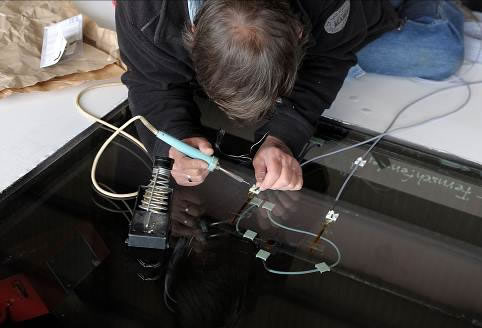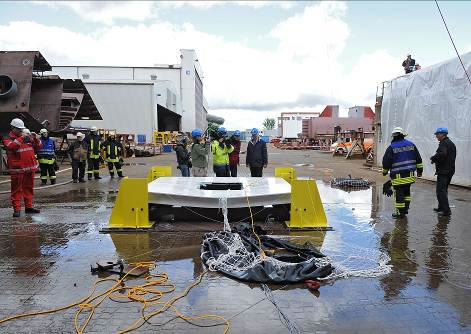Questions are being investigated experimentally - for example, in a test simulating a wave hitting a window that also was shown on television.
Research engineers wanted to find out whether the window would be destroyed and, in addition, what exactly would happen at the moment of impact. Two drop tests were performed: For the first drop test, the height and amount of water were chosen such that the glass did not suffer damage. The intention of the second drop test during which 1500 liters of water in a balloon were dropped from 38 m height was - in contrast to the television report - to break the window pane with the water balloon at any rate. Numerical calculations had been made before to meet this requirement.
No conclusive statement can be made about the wave height to which the force of the impact corresponds. However, this test has the advantage that the load is clearly defined and can be simulated using the Finite Element method and correlated with hydro-dynamic calculations.
The aim is to enable sudden loads occurring, for example, in heavy seas and the response of the hull structure to be computed and to identify potential approaches for improving structural design. For this purpose, measured values are compared with calculation results. Four type PMS40 pressure measurement gauges from HBM were installed on the window. PMS40 pressure measurement gauges are the ideal solution for transient pressuremeasurements, for example explosions or shock waves - applications where the rise time of the pressure curve is very short and pressure peaks are high.

